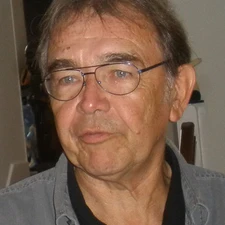Jean-Pierre Brun

The 2017 Arthur Holmes Medal & Honorary Membership is awarded to Jean-Pierre Brun for pioneering fundamental research by combining multi-scale field observations with novel experimental approaches for the development of innovative concepts in structural geology and tectonics.
Jean-Pierre Brun receives the Arthur Holmes Medal and EGU honorary membership for pioneering contributions in understanding the mechanics of the lithosphere. He invented an original way of testing various hypotheses using analogue modelling, and was the first to design sand/silicone putty experiments to model lithospheric deformation. This novel approach was instrumental in the discovery of the importance of the brittle-ductile transition and the ductile/brittle ratio in governing crustal and lithospheric deformation, a real breakthrough in our vision of the rheology of the continental lithosphere. Using his skills in field observation and analogue experiments, he made a remarkable contribution on the dynamics of extension. He was one of the first to model the exhumation of mantle rocks and lithospheric boudinage in the continent-ocean transition, soon after mantle rocks were discovered in the distal parts of passive margins. This led him to promote a vision of the rheology of the continental lithosphere in which the mantle plays a major role. Brun’s approach was followed in many labs in both the academic world and industry, where analogue modelling has been developed up to a very sophisticated level. The modelling of subduction with silicone and honey also was born in his group. His contribution has inspired many works, including the now fashionable numerical models. Brun was also a member of the Rennes University team that initiated a new turn to structural geology with the description of S-C mylonites, the explanation of sheath folds with high strain in simple shear and, more generally, kinematic indicators and the concepts of progressive deformation. He had his share in this revolution. He also had a considerable impact on the geological elucidation of the Variscan Belt in Europe and especially on the interactions of pluton emplacement and crustal deformation. He also played a leading role in the success of the deep seismic experiments ECORS (Rhine Graben profile) and the ARMOR-GeoFrance3D project of the Armorican Massif in France. He additionally spread a vision of metamorphic core complexes that is original and very successful. While his first field area was in the Armorican Massif, he made highly regarded contributions in Tibet, the Basin and Range and, more recently, in the Aegean. He has been a leader during the last twenty years, especially in the Northern Aegean and the Cyclades, and his models have shown the way for numerical models. The concepts he develops nowadays are typical of what he did during his whole career: elegant models based on solid field observations and simple physical concepts with an original vision of lithosphere dynamics.
Medal lecture video (Youtube) of the Arthur Holmes Medal given at the EGU General Assembly 2017.
